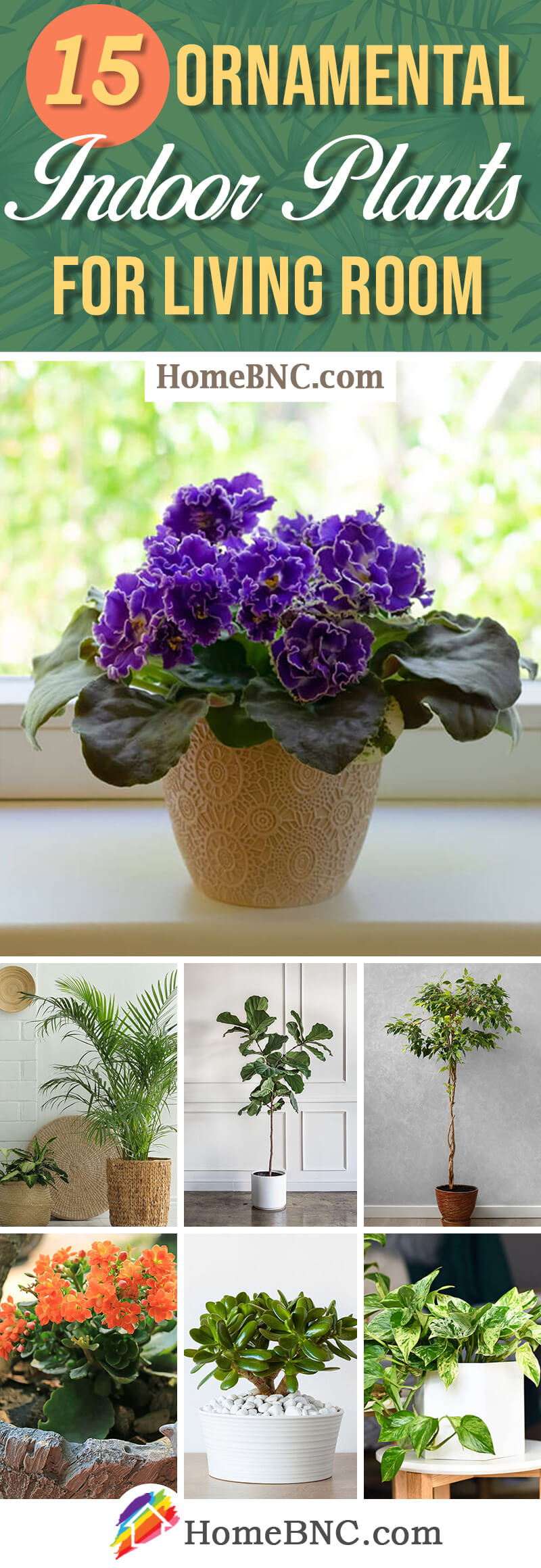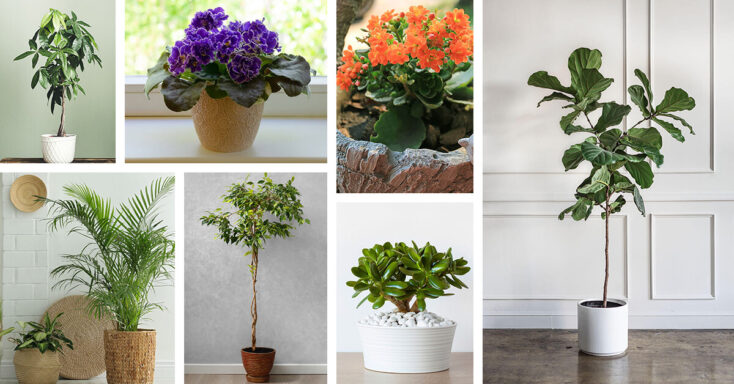Regardless of the size of your living room, you have likely wrestled with the idea of how you can improve its aesthetics. After all, the living room is where many of our most enjoyable meetings with friends and family take place. As such, it is only fitting that your living room looks its best. One of the best ways to ensure that is the case is by adding plants to your living room. To help you with the plant selection process, we have created this list of the best indoor plants for living room. Read on to learn about the amazing flowers, foliage, and other fantastic ornamental characteristics that these plants hold.
Key Takeaways
As you read through this article, you will learn plenty of information about these amazing indoor plants for living rooms. However, you can also expect to pick up on a few key themes that will repeat themselves throughout the list. Below is a quick overview of the key takeaways in this article about living room plant species.
- Indoor plants for living rooms come in many shapes and sizes, all of which should fit well in a reasonably sized container.
- These plants can feature astounding flowers and foliage.
- Indoor plants come from many different parts of the world.
- They often do not survive year-round outdoors in most parts of the United States.
- Indoor plants can become the primary focal point for your interior design.
15 Lush Indoor Plants for Living Room that Guests and Family will Love
1. African Violet (Saintpaulia ionantha)

The African violet is a small plant that can be the perfect addition to a coffee table or side table. This plant blooms with amazing flowers that are typically purple, but they can come in white as well. Each flower also has a lovely yellow center. In addition to those great flowers, the African violet also has interesting leaves that are dark green and have a fuzzy texture. This contrast between the colorful flowers and the dark, fuzzy green foliage is what allows the African violet to stand out in any living room despite being on the smaller side.
2. Bamboo Palm (Dypsis lutescens)

Despite the name of this plant and its general appearance, it is not technically a bamboo plant. However, that technical classification will not stop most of your living room visitors from assuming that this plant is an actual bamboo species. The bamboo palm tree develops many bamboo-like shoots that emerge from the ground and grow vertically. At the top of each stalk, you’ll find a set of long- light green foliage. Fortunately, bamboo palm trees are also very easy to care for, and they can adapt well to varying degrees of light exposure, which makes them perfect for growing indoors.
3. Bird of Paradise (Strelitzia reginae)
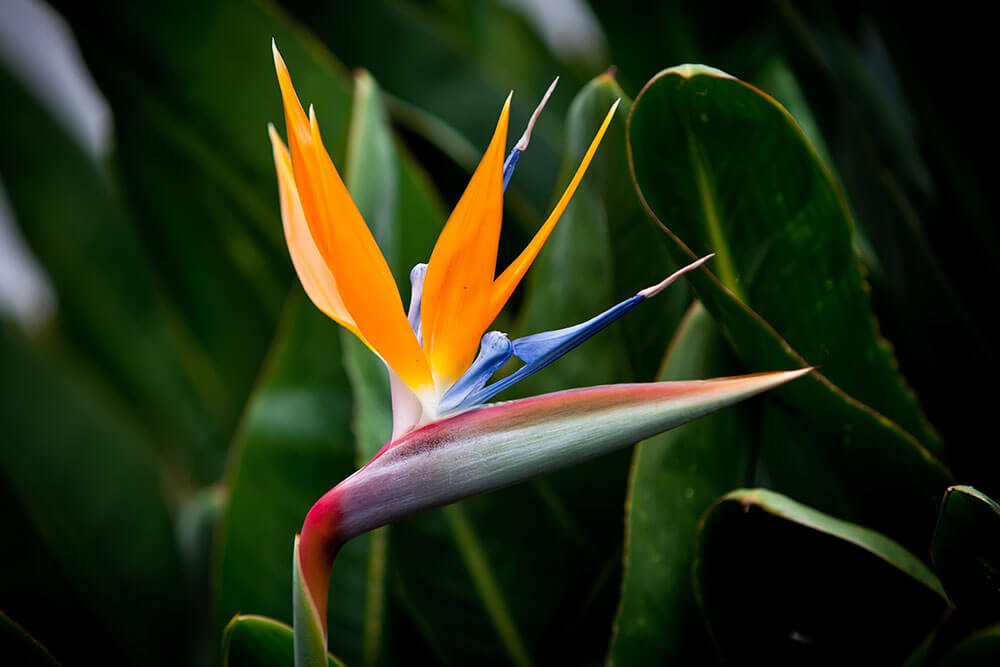
The bird of paradise plant is one of the most sought-after plants in the world, which is why it can become the perfect focal point for your living room. However, no matter where you grow this plant, it is sure to garner plenty of attention from your guests. The reason for that is that the bird of paradise flowers are bright orange and have the shape of a bird’s head. The bird of paradise plant also has large oval-shaped leaves that can be several feet long. Likewise, a bird of paradise plant is also capable of growing relatively large compared to the other plants on this list.
4. Chinese Fan Palm (Livistona chinensis)

The Chinese fan palm tree is a popular plant to grow both indoors and out, depending on how warm it remains year-round in your growing location. In outdoor settings, a Chinese fan palm tree can grow quite large, but in indoor settings, it is far more likely to reach a mature size of just a few feet tall. Regardless of where you grow this plant, its main ornamental feature is its foliage, which takes the shape of a large fan shape, hence the name. The overall form of the Chinese fan palm is rounded, as it will have a height and spread that are typically comparable to one another.
5. Devil’s Ivy (Epipremnum aureum)
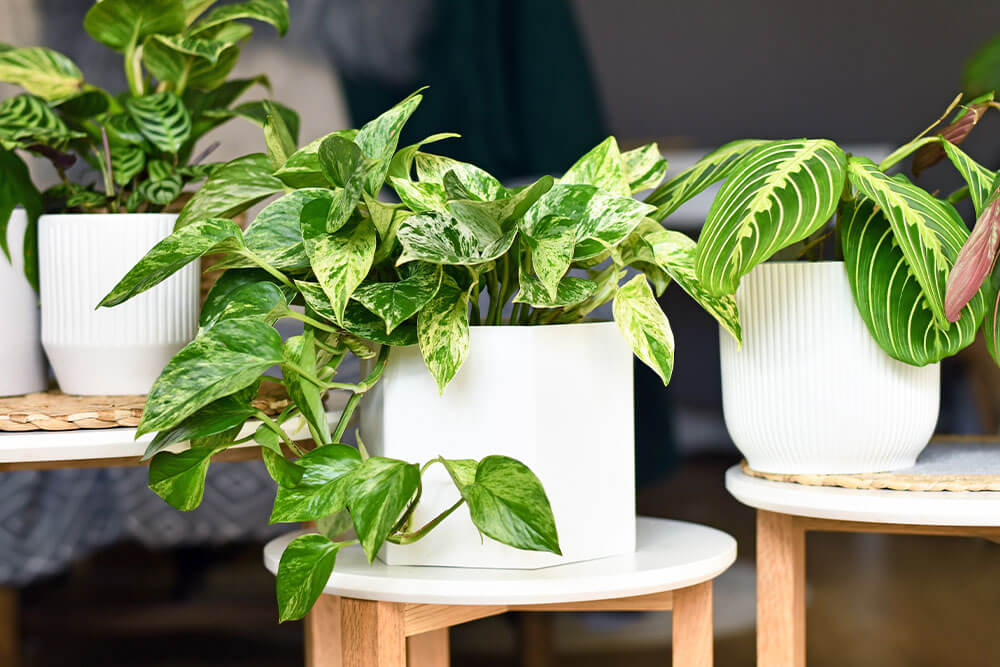
If you are looking for a plant that is easy to grow but will also provide plenty of visual interest, then there are few better indoor planting options than the devil’s ivy plant. This species sometimes goes by the name pothos and is a fast-growing vine with beautiful leaves. Amazingly, this vine will expand rapidly no matter how much sunlight it receives. The devil’s ivy plant also has leaves that have a heart shape with a distinct point. At times, these leaves can carry shades of both green and gold, which makes them all the more appealing.
6. Dwarf Palmetto (Sabal minor)
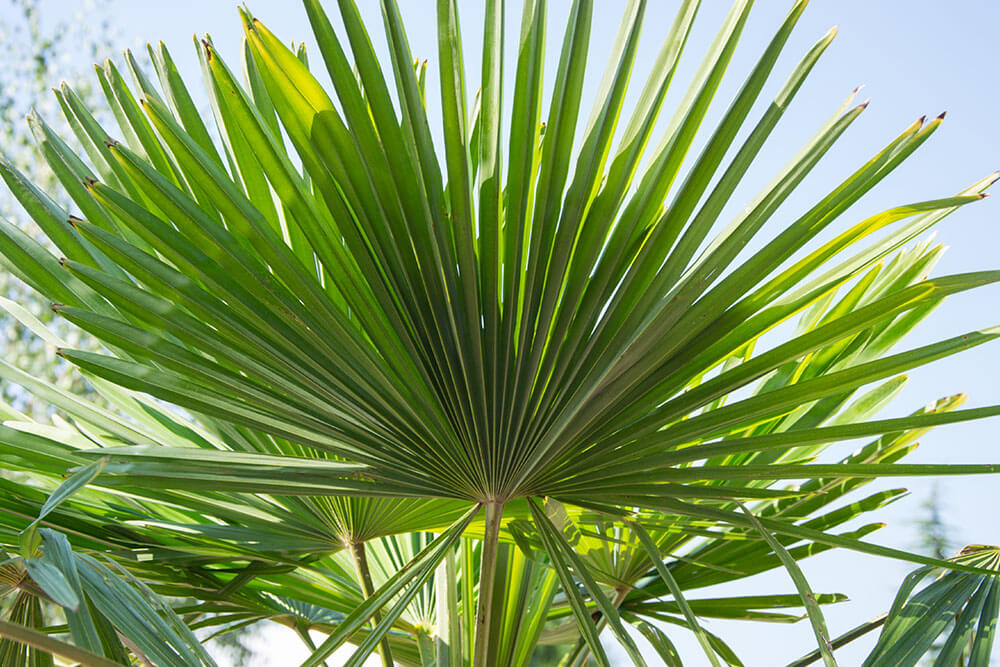
There are several types of palmetto plants, many of which are popular and widespread throughout the southeastern portion of the United States, including states such as Florida and Georgia. This version of the palmetto, known as the dwarf palmetto, may be one of the best palmetto varieties for living room growth. Since it is a dwarf species, the dwarf palmetto will grow to be between 2 and 10 feet tall, which means it can fit well in many different indoor living spaces. As was true of the Chinese fan palm, the dwarf palmetto has large fan-shaped fronds as its main ornamental feature.
7. Fiddle Leaf Fig (Ficus lyrata)
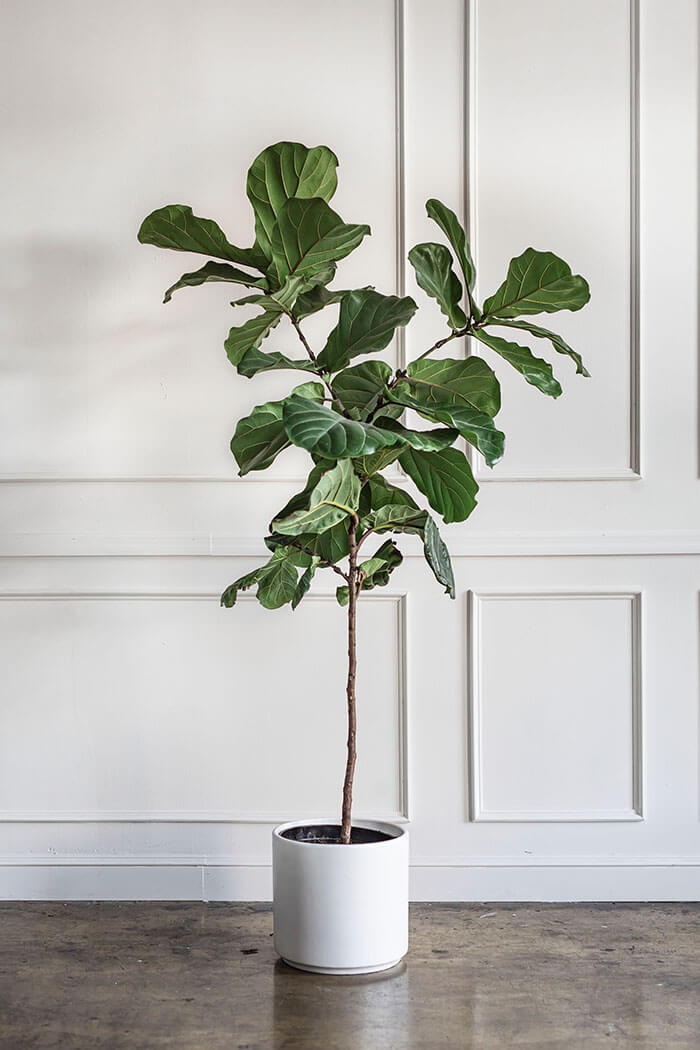
The fiddle leaf fig is a popular indoor plant option and is ideal for anyone who wants a larger plant species in their living room. Fiddle leaf fig plants grow to be several feet tall, with a classic tree form that includes a single main stem. That main stem holds the large leaves that make this plant so popular, many of which can reach multiple feet long. Each leaf also has a vague fiddle-shape and a glossy texture that interacts with the light to create a shiny appearance for this plant.
8. Flaming Katy (Kalanchoe blossfeldiana)

Although the flaming Katy plant is one of the smaller options on our list, there remain several reasons to incorporate it into your living room design. First, and perhaps most importantly, the flaming Katy plant has flowers that come in fiery hues and appear during the winter season. That bloom time allows the flaming Katy to give your living room a pop of color when few other plants are capable of doing so. Flaming Katy plants come in several color options, including red, orange, and pink, which means you should take the time to decide which of those colors is best for your home.
9. Jade Plant (Crassula ovata)
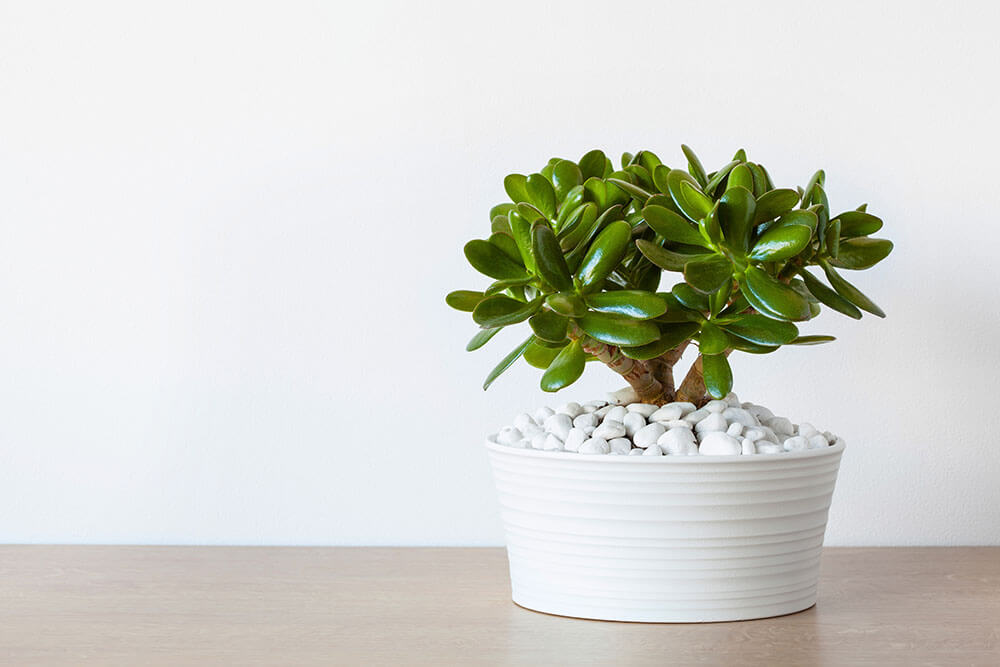
Although small, the jade plant has a form that looks a lot like a miniature tree in that it includes one or a few main woody stalks that each branches off multiple times to support a small canopy of dark green leaves. Those leaves are also noteworthy, as they have a perfect oval shape and are surprisingly thick and fleshy. In addition, some people believe that a well-placed jade plant can bring good luck to you and your home. So, if the appearance of this plant is not enough for you to include it in your living room design, maybe the chance for good fortune will make this plant a top choice for you.
10. Madagascar Dragon Tree (Dracaena marginata)
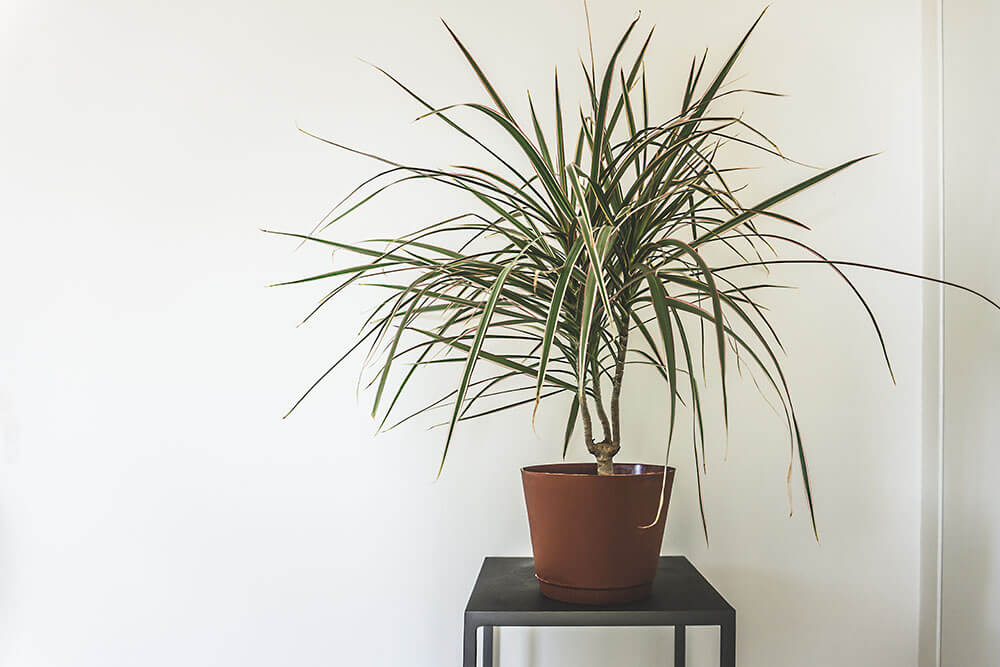
The Madagascar dragon tree is another excellent option for anyone who wants a plant that can fill a reasonable amount of space within their living room. When mature, the Madagascar dragon tree will have a long main trunk that reaches a few feet tall and holds a set of foliage that is also incredibly long and blade-like in its form. Sometimes, a Madagascar dragon tree will develop multiple stems. If that is the case, you can train those stems into a braided pattern that is incredible to behold as it develops.
11. Meyer Lemon (Citrus × meyeri)
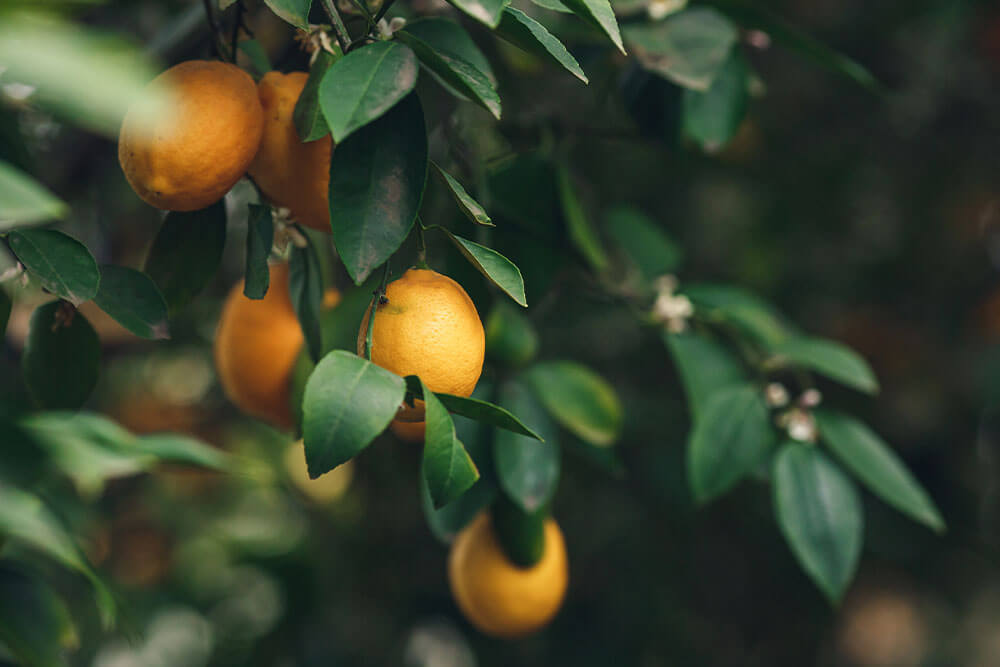
Many people assume that growing fruit is not something you can do from the comfort of your living room. However, that is not the case. In fact, the Meyer lemon tree is a lovely small tree that can survive indoors and is incredibly easy to care for. After following that simple care routine, you can look forward to a harvest of beautiful lemon fruits each year. But even if you are not interested in harvesting fruits, you can still appreciate this plant for its beauty. In that regard, the fruits add immensely to the overall appeal of this plant, as they hang from the branches like large yellow ornaments.
12. Money Tree (Pachira aquatica)
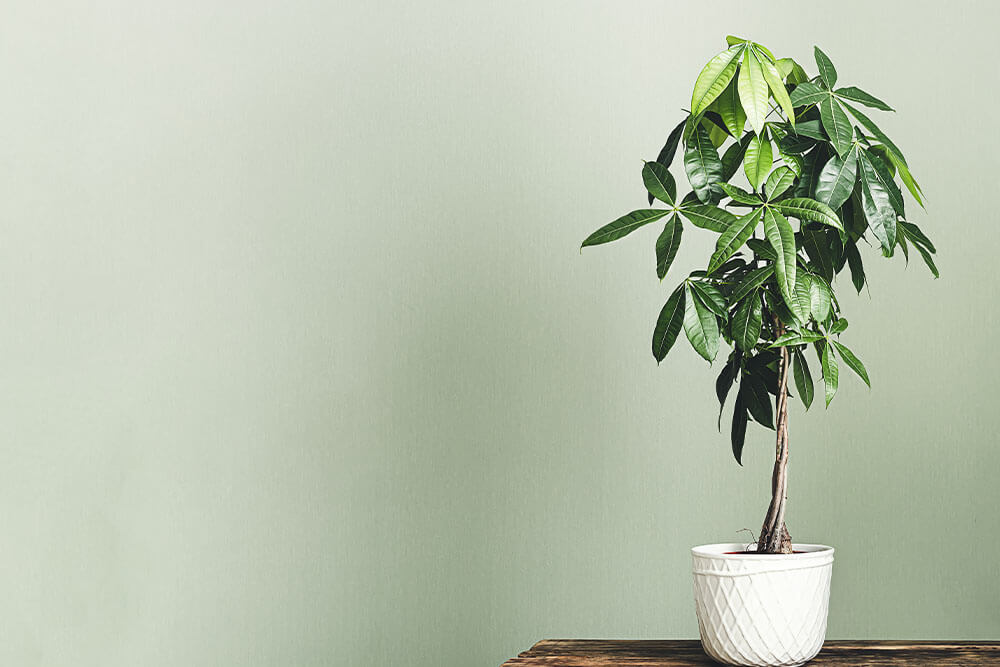
The money tree is another admirable small tree option that grows well in living room spaces. This plant’s canopy consists of large, oval-shaped leaves that have a sharp point and a light green color. As was true of the Madagascar dragon tree, the money tree can also develop multiple stems, which you can braid to create a captivating pattern. When young, this plant will be small enough to fit on a desk or table. When it is older, the money tree will be large enough to fill an entire corner of your living room.
13. Parlor Palm (Chamaedorea elegans)

Don’t be fooled by the name of this plant. Although it is called the parlor palm, this species does not need to remain in your parlor. Instead, it can look amazing in nearly any room, including your living room. Parlor palms are multi-stemmed plants that grow to be a few feet tall and are able to adapt well to containers. These plants also have an incredibly lush appearance, thanks to the many long, feathery leaves that they hold.
14. Ponytail Palm (Beaucarnea recurvata)
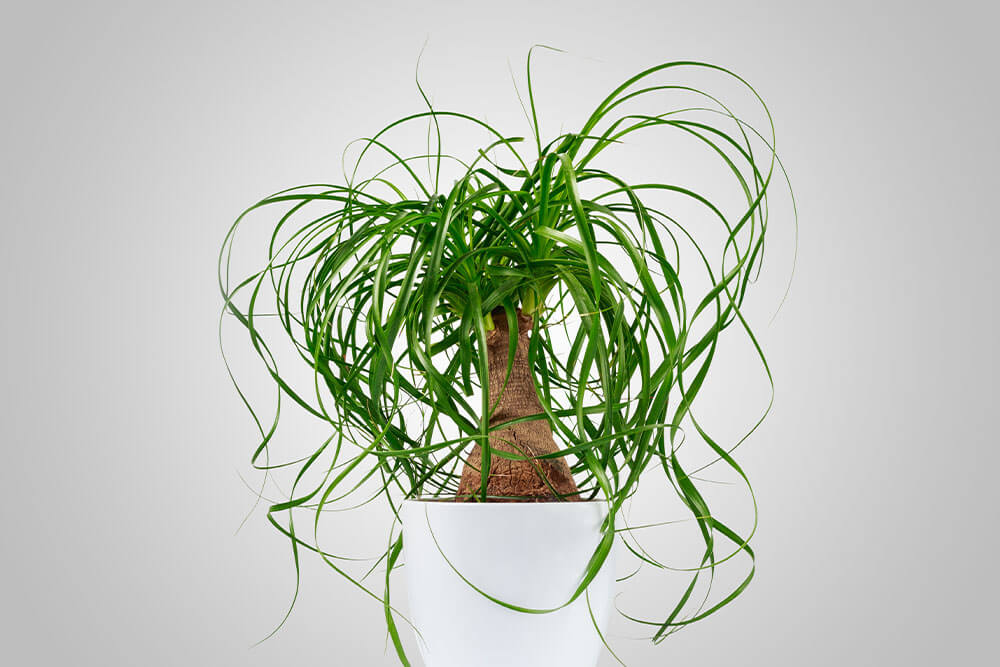
The ponytail palm tree is a plant that you will not soon forget after seeing it for the first time. The reason for that is that each feature of this plant is remarkable in its own way. For example, each leaf of the ponytail palm tree is incredibly long and tends to bend and twist as it grows. The accumulation of these leaves makes the canopy look a lot like a head of hair. Similarly, the trunk of this tree is also likely to catch your eye. It is light grey, somewhat smooth, and has a dramatic root flare that sits just above the surface of the soil.
15. Weeping Fig (Ficus benjamina)
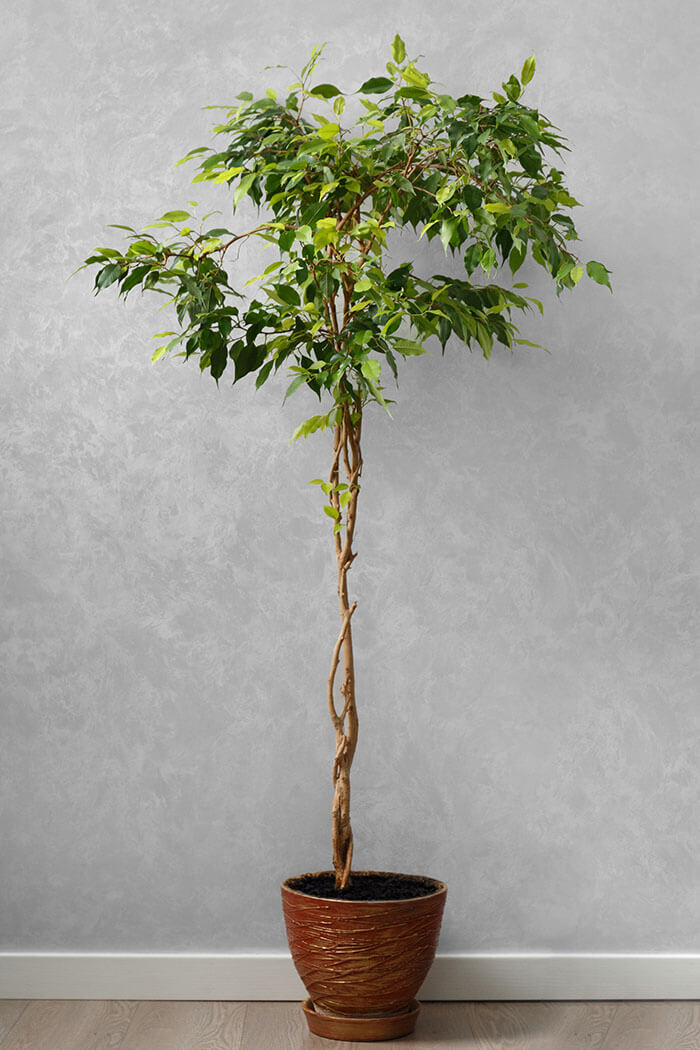
The final entry on our list is certainly as interesting, if not more interesting, than any other that we have presented so far. The weeping fig tree sets itself apart from other fig trees thanks to the loose and pendulous nature of its branches. Those branches have a subtle arch and carry many leaves that are both vibrant and shiny. As is true of other plants on this list, you can also train the weeping fig’s multiple stems into a beautiful, braided pattern. That ability alone is enough to make the weeping fig a focal point in any living room.
Since so many people are interested in finding suitable plants to live alongside them in their living rooms, there are many questions that people tend to have about this topic. In the following sections, we have answered a few of the most commonly asked questions about indoor plants for living rooms to help increase your knowledge.
Frequently Asked Questions About Indoor Plants for Living Rooms
What Plants Are Easy to Keep Alive Indoors?
The plants that are easiest to keep alive indoors are those that do not need excessive amounts of sun exposure every day. Easy-to-grow indoor plants also tend to tolerate dry air better than other plant species. Fortunately, there are plenty of indoor plants that meet those descriptions and also come with easy maintenance requirements. For example, one of the easiest plants to grow indoors is the devil’s ivy plant, which expands quickly in almost any growing setting.
How Do I Style My Living Room with Plants?
When adding a plant to your living room, one of the most important matters to consider is the overall aesthetic style of your living room. For the best stylistic results, it is ideal to select indoor plant species that have colors and textures that complement the existing elements of your interior design. It is also important to be strategic with how you choose to place and arrange your plants so that they can continue to contribute to your living room’s overall appeal.
How Many Plants Should Be in a Living Room?
The amount of plants you should have in your living room is entirely up to you. However, with that said, it is as important to consider spacing when planting indoors as it is when you are creating a garden outdoors. Each plant you own will have a mature size that you must accommodate by providing plenty of growing space in which the plant can expand while it develops. As long as each plant you grow has the space it needs, there is nothing stopping you from growing as many plants in your living room as you see fit.
Should You Have Plants in Your Living Room?
Having plants in your living room is, by no means, a requirement. However, there are some benefits to adding plants to indoor living spaces. Mainly, plants bring a sense of life and excitement to indoor spaces that other design items cannot match. Still, there are instances in which it is not a good idea to have plants in your living room. For instance, you should always be wary of plants that are highly toxic if you have children or pets that frequently spend time in your living room.
Which Indoor Plant is Best for Living Rooms?
There is no single indoor plant that is best for living rooms. Instead, determining which plant is best for your living room depends on several factors. First, the best living room plant for you is always one of the species that is capable of growing in the conditions that your living room provides, including sunlight and air moisture. Additionally, the best plant for your living room is also able to match and enhance the aesthetics that already exist in that room.
15 Focal Point Indoor Plants for Living Rooms that Enhance any Interior
Growing plants is one of the best ways to bring your living room design to the next level. But before you set out on your indoor gardening adventure, you should begin by learning about which plants are best for living rooms and which ones look the best to you. Reviewing this list of the best indoor plants for living rooms is a reliable way to start. A quick recap of the plants we just shared with you should set you on the path toward creating a lush living room that anyone who visits it is sure to enjoy.
